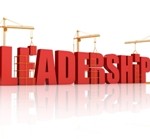 by Ravi Saligram
by Ravi Saligram
Building and maintaining a high-performance work culture can be a test of wills and expectations even within a tightly knit organization. Those efforts and struggles only deepen within the context of a corporate merger or acquisition where it takes vision, fortitude (and a solid dose of humility) to orchestrate the movements of two cultures into one.
I’ve orchestrated a number of acquisitions over the years and have found that assessing a target’s culture and planning for cultural integration is an often undervalued dynamic. Typically, culture is not given the same level of importance in M&A due diligence as financials, growth drivers, synergies and valuation models. We focus on the things that are crunchy and tangible, so the human factor is left out of the equation. It isn’t until we get into integration that we see the intense effect culture has on the short-term gains and long-term success of the new organization. Continue reading





 By Bonnie W. Gwin, Ryan Pastrovich and Jeff Sanders
By Bonnie W. Gwin, Ryan Pastrovich and Jeff Sanders By Gwen Moran
By Gwen Moran by Jill Griffin
by Jill Griffin